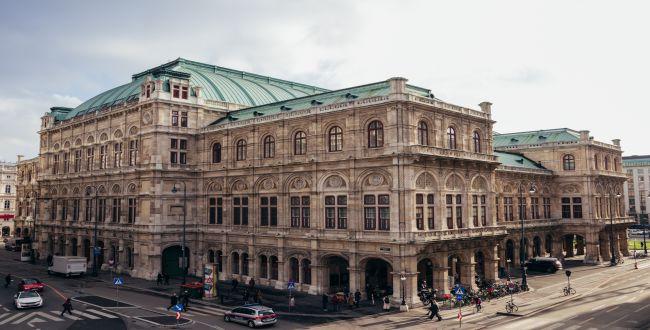Opera Houses in Austria

Top 3 of the Opera Houses in Austria
It is a special experience to see well-known pieces in an opera house, but it is even better to see them in the local area. But how did they evolve into what you know today? We would like to give you a little insight into Austria's top 3 opera houses!
Vienna State Opera
The Vienna State Opera is one of the most important opera houses, also on an international level! It not only looks back on a past with many traditions, but also integrates the multifaceted present. Various Viennese people were involved in the planning of the opera house, such as architect August von Sicardsburg and interior designer Eduard van der Nüll, as well as the artist Moritz von Schwind. Although the two architects were not in residence at the opening of "their" opera house, it was opened on May 25, 1869 in the presence of Empress Elisabeth and Emperor Franz Joseph I. with Mozart's "Don Giovanni". Many conductors helped the State Opera to become popular, including Johann Herbeck and Franz Jauner. The first climax was reached with director Gustav Mahler.
The opera was also shaped by dark times, such as the years between 1938 and 1945, because many opera members were persecuted, expelled or even murdered. Although the house was largely devastated by bombs, the State Opera in the Volksoper opened not too long afterwards. After the restoration of the Vienna State Opera, it was finally reopened in November 1955. It is regarded worldwide as a sign of life for the newly created Second Republic.
In general, the opera house is made in the Renaissance arch style, where you can also see two winged horses. On the pedestals in the arcades are five bronze statues: Heroism, Melpomene, Imagination, Thalia and Love. There is a fountain on the left and right side of the house. Did you know that they are supposed to represent the opposing worlds? While the one on the left stands for joy, carelessness, music and dance, the fountain on the right side symbolizes love, revenge and sorrow. On the vertical side of the main wing, there are transverse wings. There you can find the coat of arms of the Austro-Hungarian Monarchy.
Volksoper Wien
As mentioned, the Volksoper Vienna was opened after the State Opera was bombed during the National Socialism. The theater initially functioned as a theater for the 50th anniversary of the reign of Franz Joseph I. 1903 the first operas were performed. A year later, the Stadttheater finally became the Volksoper. In the Volksoper, designed by the two architects Franz Krauss and Alexander Graf, the first conductors were Alexander Zemlinsky and Johannes Heester. In February 1948 there was a first in the roof structure, so that the current performances had to take place in the Redoutensaal. In the course of the renovation, the stage was rebuilt and a complete modernization of the stage area was carried out. Today, it is the second largest opera house in Austria.
Opera Graz
Like the Volksoper in Vienna, the Opera in Graz was designed on the occasion of the 50-year reign under Franz Joseph I. by the architects Ferdinand Fellner and Hermann Helmer in 1897. At the opening in 1899, the pieces "William Tell" by Friedrich Schiller was performed. The most diverse pieces were performed on the opera stage until, during the Second World War, an aerial bomb slightly damaged the roof and the facade of the main entrance. During the renovation work after the end of the war, the front facade facing the Opernring was greatly simplified - this means the facade stucco and pillar portico were repealed.
In general, the Opera House in Graz consists of architectural and artistic elements from the Baroque, Gothic and Renaissance. The main entrance is decorated with a classic portico with six composite columns and above of it, there is a balcony. Furthermore, when building the opera on the upper floor, the architects arranged regularly arranged pilasters and three-quarter columns on the outer walls of the basement. The many arched windows loosen everything up, as they lie between the two aforementioned elements. A special extension of the opera house is the glass bridge, which connects the stage area with the newly builit scenery depot. It was done in the 1980s by Gunther Wawrik.
Have you already visited these opera houses? If not, be sure to check it out - you certainly won't be disappointed!